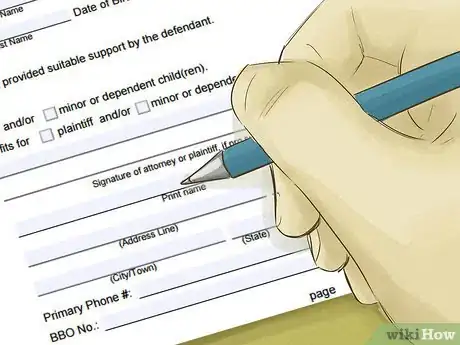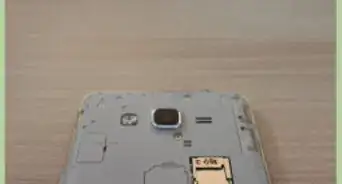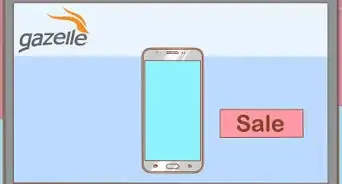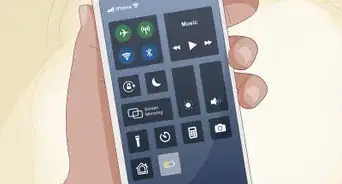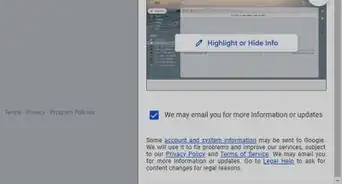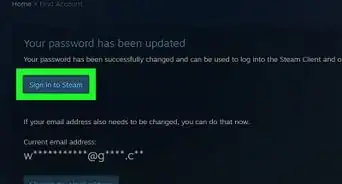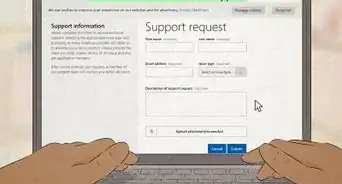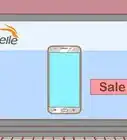This article was co-authored by Clinton M. Sandvick, JD, PhD. Clinton M. Sandvick worked as a civil litigator in California for over 7 years. He received his JD from the University of Wisconsin-Madison in 1998 and his PhD in American History from the University of Oregon in 2013.
There are 8 references cited in this article, which can be found at the bottom of the page.
This article has been viewed 412,712 times.
If there are charges on your cell phone bill that you do not recognize, and you believe these charges are not legitimate, you have the option of disputing your bill with your service provider. Alternatively, you may recognize the charges or the charges may be legitimate but you may still believe that disputing those charges could result in your service provider offering you a full or partial credit. To dispute your bill, contact your service provider. Often a simple phone call to your provider can save you money. If your dispute is not resolved in this manner, you can seek to have your dispute resolved through arbitration or by filing an action in a small claims court.
Steps
Contacting Your Service Provider
-
1Have a copy of your bill in front of you. Before contacting your service provider, have a copy of your bill in front of you so that you can refer to the specific parts of the bill that you wish to dispute. Your bill also contains important information, such as your account number, which your provider may ask you for verification purposes. If you have signed up for paperless billing, you should be able to download your bill online and print out a copy or have an online version of the bill in front of you before contacting your provider.
-
2Decide what you consider to be an acceptable resolution of the dispute. If you are disputing a charge, you may be happy with a partial reduction of the charge or you may feel that the provider must remove the charge completely. If the charges you are disputing are valid and are there due to an oversight on your part, be reasonable in your expectations and remember that you may only receive, at best, a partial credit.Advertisement
-
3Have a pen and paper ready. Be prepared to write down the name of the customer service representative when you call your provider. Also log the time and date of your call so that you have a record of your calls made to the provider should you need this information later in the process of disputing your bill. Having pen and paper ready is also useful for writing down any important information (such as a promise to waive the disputed charges) that the customer service representative provides to you.
-
4Contact your service provider. Find out your service provider's customer service number, which is usually a toll-free number. Call this number to contact the provider and go through the automated system to reach a customer care specialist. You may also have the option of chatting with a customer care specialist online, as in the case of ATT.[1] Choose the method with which you are most comfortable.
-
5Explain the charges in dispute to the customer care specialist. The call will usually begin with a series of questions, such as what your name and account number is, and will continue with a series of security questions for verification of your identity. Once the specialist has asked you such questions, calmly explain why you are calling and refer the specialist to specific parts of the bill you are disputing. Always try to be polite and avoid being accusatory. The customer care specialist is there to help you and may be more sympathetic to your case if you are polite. This is especially important if the charges you are disputing are due to a fault of your own.
-
6Request a credit. After explaining the issue to the customer care specialist, request that she waive the charges in dispute. If the disputed charge is there because of a fault on the part of the service provider, she should normally waive the full amount. If the charges in dispute are due to an oversight on your part (e.g. you forgot to sign up for an international data roaming plan and used your cell phone data abroad), then the provider may issue a partial courtesy credit.
-
7Call again if you are unsuccessful the first time. If you are unsuccessful in convincing your service provider to reduce or waive the disputed charges according to your expectations, try again. Call at another time and you might be connected to a customer service specialist who is more sympathetic to your case. Note, however, that the representative will generally have in front of her notes made by the representative to whom you previously spoke, and will be aware of what the representative told you the first time and the outcome of that call.
Resolving Your Dispute Through Binding Arbitration
-
1Consider binding arbitration. If calling your service provider has not resulted in a satisfactory outcome, you can seek to resolve your billing dispute through binding arbitration. Cell phone contracts in the United States generally contain a provision allowing for binding arbitration. Arbitration proceedings are similar to court proceedings except arbitration is less formal and uses a third party known as an 'arbitrator' instead of a judge. The arbitrator gives an award after hearing evidence from both sides. The arbitrator's decision is generally binding and subject to limited review by courts.[2]
-
2Read your contract or service provider's website for information on the process of arbitration. Your contract will generally contain information about binding arbitration, but you can also access this information on your service provider's website. Read this information carefully so that you know what procedure to follow if you are considering arbitration to resolve your dispute.
- If you are an ATT customer, click here for information on binding arbitration.
- If you are a Verizon customer, click here for information on binding arbitration.
- If you are a T-Mobile customer, click here for information on binding arbitration.
- If you are a Sprint customer, click here for information on binding arbitration.
- If you are a Bell Mobility customer, click here for more information on binding arbitration.
-
3Present a strong case. Arbitrators can make a decision on written documents presented by both sides, and by doing so, you can avoid an in-person hearing. In-person hearings can be time consuming and inconvenient, and presenting a strong case by clearly setting out your arguments in a written document can be easier than doing so in an in-person hearing.[3]
Resolving Your Dispute by Going to Small Claims Court
-
1Consider going to Small Claims Court. If calling your service provider does not yield the desired result, consider taking your claim to a small claims court. A small claims court is part of the state court system in the United States. In this court, a person can sue for monetary damages up to a certain amount stipulated by state law. There is no need for an attorney (you can represent yourself), and the applicable rules of evidence are generally simple rather than complex.[4]
-
2Research the laws of your state regarding small claims. It is important for you to research the laws of the state in which you are resident regarding small claims actions because the process involved and the rules may vary from state to state. In Texas, for example, you can sue in a small claims court if the amount in dispute is up to $10,000[5] while the upper limit in Connecticut is $5,000.[6] While the amount in dispute on your cell phone bill is likely to fall within the upper limit stipulated by most states for small claims actions, there have been reported cases of international roaming charges exceeding thousands of dollars.[7] Know what specific rules apply to small claims actions in your state.
-
3Complete the necessary forms to initiate the suit. Follow your state's rules on the forms required to initiate a small claims suit. In Illinois, e.g., to initiate a small claims lawsuit, you must visit the courthouse where a small claims clerk will provide you with the necessary forms (i.e. a summons and a complaint form) to initiate the lawsuit.[8] You can find a useful repository of all the rules on small claims in every American state and links to the official government websites that contain information on how to file and what forms are required in your particular state by visiting this website.
-
4Attend your hearing. Go to your hearing with your attorney if you have hired one or by yourself if you are representing yourself. Bring all the evidence necessary to present a strong case (e.g. your cell phone bill, the facts of your case, promises made to you by customer care specialists). [9]
-
5Present a strong case. To present your strongest case to the judge, be sure to get to the heart of your argument quickly. The judge will likely have heard dozens of cases similar to yours, and you need to present a strong case that does not lose her attention. You can present a strong case by describing the events that led to your dispute and offer concrete evidence that supports your claim against your service provider.[10]
References
- ↑ http://www.att.com/esupport/article.jsp?sid=KB72565&cv=820
- ↑ http://www.att.com/esupport/article.jsp?sid=KB72565&cv=820
- ↑ http://www.verizonwireless.com/support/arbitration-and-mediation-faqs/
- ↑ http://www.jud.ct.gov/faq/smallclaims.html
- ↑ http://guides.sll.texas.gov/small-claims
- ↑ http://www.jud.ct.gov/faq/smallclaims.html
- ↑ http://www.wsj.com/articles/SB10001424052702304331204577351824213467562
- ↑ http://www.ag.state.il.us/consumers/smlclaims.html
- ↑ http://www.scscourt.org/self_help/small_claims/day_in_court.shtml





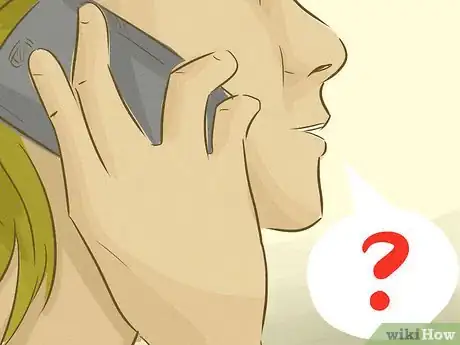
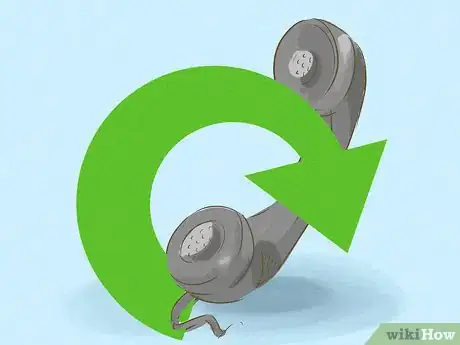



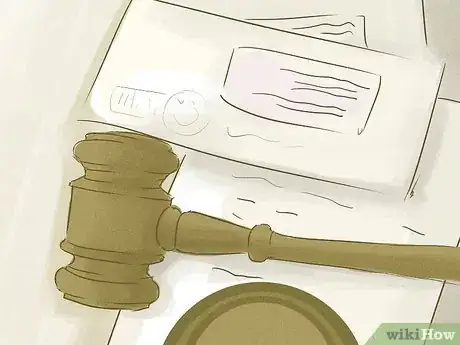
-Step-1.webp)
